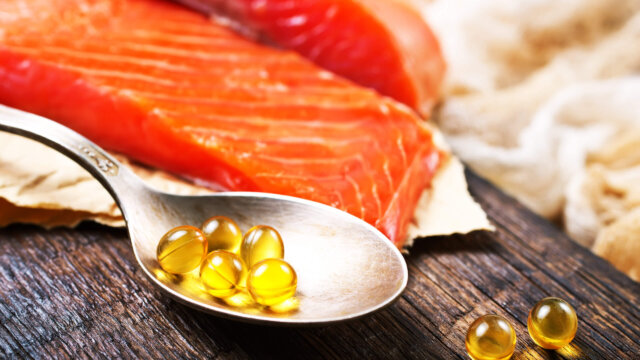FTC disclaimer: This post may contains affiliate links and we will be compensated if you click on a link and make a purchase.
To know Omega 3 6 9 and whether they are good, you have to know the differences between these fatty acids. Each has particular benefits, although one, Omega 3, has the most health benefits.
To understand this, Let’s understand fatty acids basics.
Fatty acids are classified as either saturated or unsaturated.
And unsaturated fatty acids are either monounsaturated or polyunsaturated
The classification depends on the presence of double bonds in the molecules.
The saturated fatty acids have no double bond. The monounsaturated fatty acids have only one double bond. And the polyunsaturated fatty acids have two or more double bonds.
Omega 9 is monounsaturated fatty acids (MUFA). Omega 3 and Omega 6 are polyunsaturated fatty acids (PUFA).
Chemically, Omega 3 has its first double bond at carbon number 3 (counting from the methyl end), and Omega 6 has its first double bond at carbon number 6.
Similarly, Omega 9 has its first double bond at carbon number 9.
This article will give you more information about these three groups of fatty acids.
Which Fatty Acids Are Essential Fatty Acids
Both saturated fats and monounsaturated fatty acids can be synthesized (produced) by the body.
Therefore, they are not essential parts of your diet, or, as is said, they are not essential fatty acids.
However, the body cannot produce polyunsaturated fatty acids, Omega 3 and Omega 6.
We must take them in through the food we eat or by taking a supplement. These are called essential fatty acids because they must come from our diets.
The Components of Omega-3, 6, 9 Fatty Acids
The omega-3 fatty acids have at least three double bonds starting from the 3rd carbon from the methyl end of the fatty acid molecule.
Omega 3 consists of three types:
- Eicosapentaenoic acids (EPA)
- Alpha-linolenic acids (ALA)
- Docosahexaenoic acid (DHA).
Like Omega 3, Omega 6 belongs to the group of good fats called polyunsaturated.
Also, like Omega 3, Omega 6 is an essential fatty acid that your body needs to function optimally, but your body can’t create Omega 6 on its own. It means you need to get your Omega 6 from outside sources.
The omega-6 fatty acids have their first double bond at the 6th carbon from the methyl end of the molecule.
Omega 6 consists of mainly four types:
- Linolenic acids (LA)
- Gamma-linolenic acids (GLA)
- Dihomo-gamma-linolenic acid (DLA)
- Arachidonic acids (AA)
Omega-9 fatty acids are monounsaturated fats, having one double bond at the 9th carbon from the methyl end of the molecule.
Omega 9 consists of mainly two types:
- Oleic acids (OA)
- Erucic acids (EA)
Omega 9 acids are not classed as essential fatty acids (EFA) because the human body can create them from unsaturated fat.
Omega-3, 6, 9 Fatty Acids Food Sources
Where will you find Omega 3 fatty acids?
DHA and EPA are the two most essential fatty acids in Omega 3. They are found in fish oils and some vegetable oils.
ALA has not been shown to have the same cardiovascular benefits as DHA or EPA.
Omega-3 fatty acids are found in foods such as
- Walnuts
- Canola oil
- Marine cold-water fish
- Fish oils
- Spirulina
- Salmon
- Egg
- Chia seeds
- Sardines
- Cod Liver Oil
Alpha-linolenic acid (ALA) is the essential omega-3 fatty acid, and it is present in
- Walnuts
- Flax oil
- Canola oil
- Chia seeds
- Flaxseeds
Moreover, ALA can (to a minimal extent) be converted to the more active forms of omega-3 fatty acids, Eicosapentaenoic Acid (EPA) and Docosahexaenoic Acid (DHA).
However, the conversion of ALA to EPA and DHA is poor.
So, to get EPA and DHA, it is best to consume these fatty acids from food sources such as:
- Marine cold-water fish (i.e., salmon, mackerel, or tuna [fresh or canned in water])
- Foods fortified with EPA or DHA.
Where you will find Omega 6 fatty acids
Omega-6 fatty acids are also found in these good food sources:
- Eggs and meats
- Cold-pressed Vegetable oils, including corn oil, soybean oil, safflower oil, and sunflower oil
- Nut, seeds, and beans such as palm nuts, soya beans, rapeseed, and sunflower seeds
- Green leafy vegetables
- Grains
Moreover, you can also get Omega-6 fatty acids from bad food sources such as margarine and numerous baked or processed foods.
When vegetable oils are processed and partially hydrogenated, the Polyunsaturated Fatty Acids are converted into trans fatty acids.
Where will you find Omega 9 fatty acids?
Omega 9 fatty acids are found in the following food sources:
- Rapeseed
- Wallflower seed
- Mustard seed
- Olives and olive oils
- Avocados
- Nuts such as Almonds, Macadamia, Pistachios, Cashews, Pecans
Olive oil, a fundamental element of the ‘Mediterranean diet, is thought to prevent the high risk of cardiovascular diseases and heart attack.
Omega-3, 6, 9 Health Benefits
What are Omega-3 health benefits?
As discussed before, Omega 3 fatty acids contain the two most important fatty acids for our bodies, DHA and EPA.
EPA is essential for all ages. So is DHA, but DHA is vital for pregnant and lactating women.
DHA is a critical building block of the baby’s brain that develops during gestation and during the first stages of life.
Omega 3 fatty acids have anti-coagulant effects, essential for fighting cardiovascular diseases.
And Omega 3s have anti-inflammatory effects, which are valuable in resisting inflammatory disorders such as rheumatoid arthritis.
It also helps prevent cancer (breast, colon, and prostate), cardiovascular diseases, heart disease, behavioral problems, mental disorders, and PMS symptoms.
What are Omega-6 Fatty Acids’ health benefits?
Omega 6 fatty acids are primarily inflammatory. You will have problems if you consume more (inflammatory) Omega 6s than (anti-inflammatory) Omega 3s.
However, Omega 6s are essential fatty acids beneficial for skin, nails, and hair.
Like Omega 3, Omega 6 plays a vital role in the body. Omega-6 converts GLA into prostaglandins which regulate the functions of the heart, the gastrointestinal tract, and the kidneys.
GLA (gamma-linolenic acid) and ARA ( arachidonic acid) are found in animal and plant-based oils.
GLA has anti-inflammatory properties that help to prevent PMS pains. It also supports the proper balance of hormonal tissues and emotional moods.
Also, like Omega 3, Omega-6 can help treat arthritis, eczema, and diabetes. However, Omega-6 may also help treat PMS, endometriosis, and acne.
Combined Omega-3 and Omega-6 in proper proportion (1:1 or 2:1 or 4:1) produce good results for our bodies.
What are Omega-9 fatty acids’ health benefits?
Omega 9 fatty acids have Oleic acids, which protect against cardiovascular diseases.
So, as you can see, Omega 3, Omega 6, and Omega 9 are suitable for different things.
However, the fatty acids that are most beneficial for your health are the Omega 3s that are found in fish oil and fish oil supplements.
Omega-3, 6, 9 Fatty acid’s side effects?
Some medical researchers point to potential adverse health effects with excessive levels of omega 6.
Further, it suggested that there should always be a much higher percentage of omega-3 to omega-6 in our diets.
Vegetable oils generally have high levels of omega-6 and should be used in limited quantities.
Some signs if triple Omega 3, 6, 9 take in large dose includes:
- Skin Rashes or itching
- Dizziness
- Swelling of the tongue, face, or throat
- Breathing problem.
The dietary ratio of Omega-3, 6, 9 fatty acids
The ratio between Omega-3, Omega-6, and Omega-9 is critical— the proper ratio for Omega-3, 6, 9 is 1:1:1 or 2:1:1 or 4:1:1.
According to a research study, maintaining a healthy diet that provides all nutrients will keep you away from many diseases.
But, if there is an imbalance between the consumption of Omega-3, 6, 9 nutrients, it will create deposition of extra fats.
Further, it will lead to many health problems.
According to the research paper, the following doses are recommended:
- Omega 3: < 3 gram / daily
- Omega 6: Less than Omega 3
- Omega 9: Less than Omega 6
How to maintain healthy Omega 3, 6, 9 ratios?
The diets of our ancestors, such as hunter-gatherers, had a meager ratio of omega-6 to omega-3 fatty acids, around 1 to 1.
However, we consume total fat and processed foods more than before. The typical western diet has a ratio of omega-6 to omega-3 of approximately 10 to 1. It sometimes reaches as high as 20 to 1.
Processed foods are a big part of Americans’ foods today, such as fast food. They contain more omega-6 than we need.
It is vital to lower the amount of omega-6 we get and add more omega 3 in our system.
Omega-6 by itself can cause problems. Researchers reveal that most of us get ten times more omega-6 than omega 3.
Some studies have shown that people eat more than 20 to 30 times more omega-6 than omega 3.
A high ratio of omega-6 omega-3 can cause health problems such as:
- Thickening of blood causing blood clots
- Increased risk of autoimmune disease
- Some inflammatory disease
- Certain types of cancer
When the Omega-3 and Omega-6 ratio is maintained, it is beneficial to our health. Also, you can maintain through natural food sources such as animal fats, plants, and fish oils.
Moreover, the proper balance of Omega-3 and Omega-6 help lower the levels of cholesterol, high blood pressure, and blood triglyceride.
Further, they help to stimulate the circulation of blood in our bodies.
Do you need supplements for Omega 3, 6, 9 fatty acids?
You can get enough Omega-6 fatty acids from your daily diet. And, Omega-9 fatty acids are sufficiently produced by our body.
So, you don’t require supplements for Omega 6 and 9 fatty acids. But, it may be possible that you won’t get enough Omega 3 fatty acids.
Moreover, you can maintain a dietary ratio of Omega 3, 6, and 9 fatty acids by consuming healthy foods like healthy fish, olive oils, nuts, and more.
However, if you consume more processed foods like pizza, pasta, cold drinks, fries, and refined vegetable oil, Omega 6 fatty acids intake will be more.
To balance Omega 6 fatty acids, you need to consume more Omega 3 fatty acids and minimize processed foods.
If Omega 3 fatty acids are not sufficient for your diet, you need Omega 3 fatty acids supplements to balance the ratio.
How to choose Omega 3 supplements?
If you don’t like fish or do not get sufficient Omega 3 fatty acids from your diet, you can take omega-3 dietary supplements.
Omega 3 dietary supplements mostly come in pill form.
When picking a brand of omega-3 supplements, you don’t necessarily have to get the most expensive one.
Some companies will tell you that cheaper brands may contain toxic chemicals like mercury. Which they can, but very rarely.
Freshness and purity are the most important in choosing Omega 3 supplements. You should note that Omega 3 supplements are made by filtering out any toxins, tested, and certified.
What to do when buying omega-3 supplements:
- Don’t compare by price
- Purity
- Freshness
- Research the brands
- How much EPA and DHA you’re getting in a 1000 mg capsule
Most brands will have the results of their Certificate of Analysis on their website. If they don’t, it is better to avoid that product.
So before going out to buy omega-3 fish oil pills, do your research because there is a big difference between the best and the worst when it comes to price, purity, and freshness.








